A phono preamplifier is a great and often inexpensive way to improve the sound of your vinyl. While many integrated amplifiers and preamplifiers include a phono stage, they often struggle to match the sound of separated components for many reasons, but I suspect the biggest reason is that the budget that is set aside for components inside those boxes is going to be weighted more towards the amplification or the digital section (if it has one) as, like it or not, we live in a digital world. The Cambridge Audio Alva Duo (buy at Crutchfield) is a phono preamplifier from Cambridge Audio, a company based in England that has been making audiophile gear since 1968. This phono preamplifier can handle both moving magnet and moving coil cartridges, has a headphone jack on the front, and you can also finetune the balance of the cartridge either to the left or the right with a knob located on the back. There are many inexpensive phono preamplifier options out there today, so let us see if the Cambridge Audio Alva Duo is worth your time and (not very much) money.
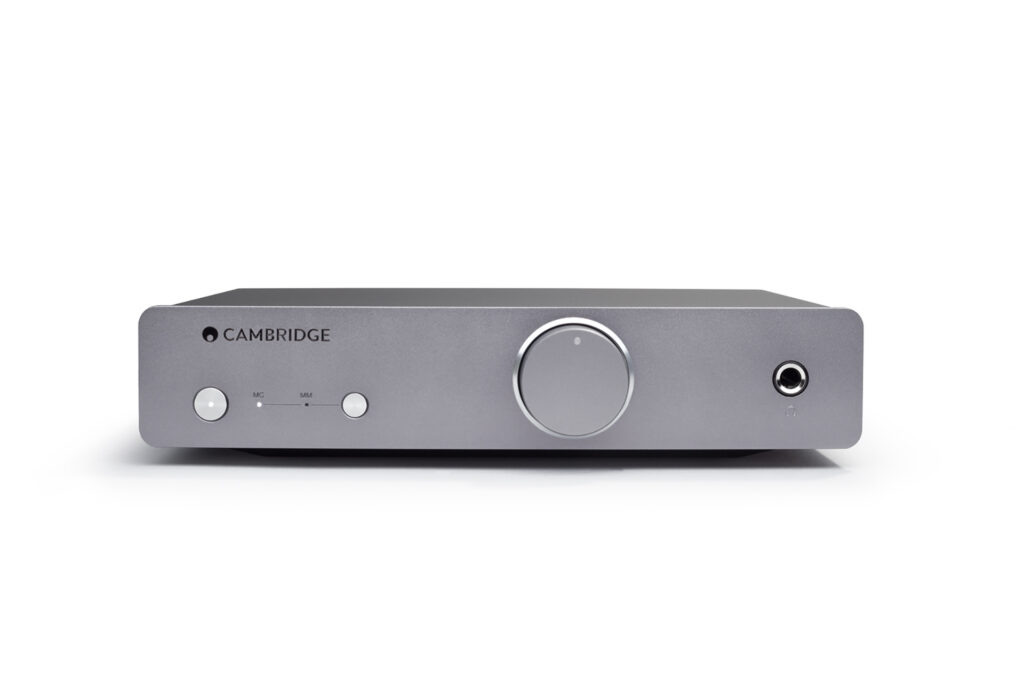
What Makes the Cambridge Audio Alva Duo Phono Preamplifier So Special?
- The physical shipping/product box is made from notably high-quality materials. The folks at Cambridge Audio didn’t cheap out when they were making the box so that it could contain all of the components. It is very solid, and it feels like it could withstand more than a few drops on the floor, not that any of would ever do that, but it is also a sign of a company that understands quality is a battle fought on many fronts.
- Having a Moving Coil option allows you the option to upgrade your cartridge without needing a new preamplifier. Not every phono preamplifier at this price point comes with a moving coil option, so having it included is a really nice value add for vinyl enthusiasts and audiophiles alike.
- The Cambridge Audio got the small details right on this phono preamplifier. It is often the small details that make the difference, especially when you have similarly-priced options in a category, and Cambridge Audio really got them right. The buttons on the right side of the component are responsive, and don’t feel cheap. They include a volume knob if you want to plug the Alva Duo directly into your amplifier, and they wrote the words on the plug-ins on the back upside down, so you can read them when you are connecting your turntable.
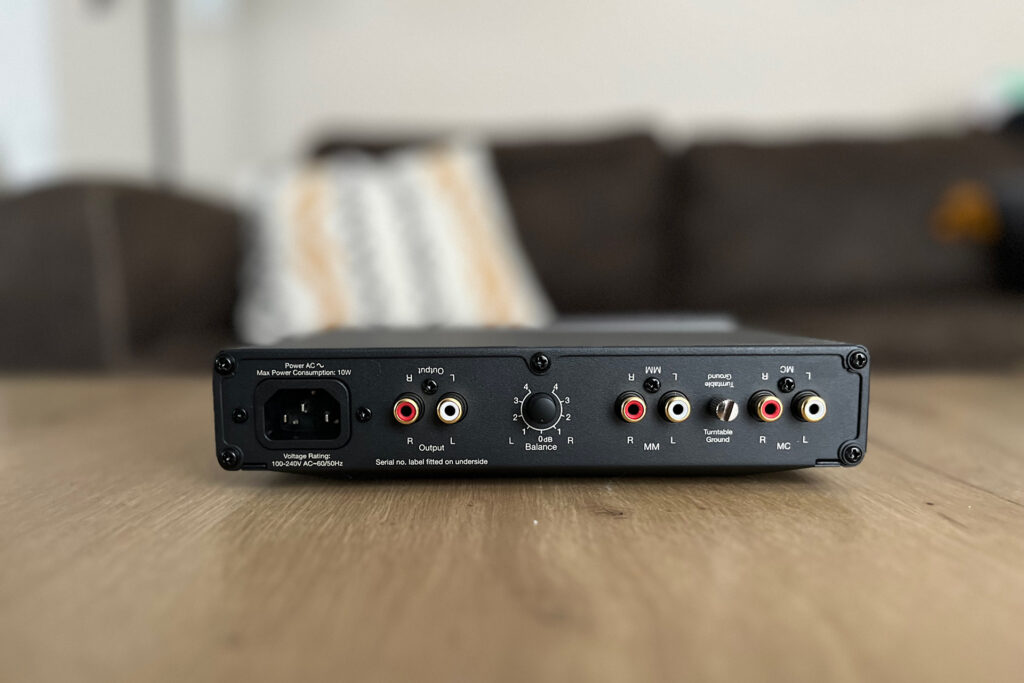
Why Should You Care About the Cambridge Audio Alva Duo Phono Preamplifier?
Up until now, I had always relied on the phonostage in my preamplifier to amplify the sound coming from my turntable. It was convenient, but after I put the Cambridge Audio Alva Duo into the signal chain, I don’t think I can go back to life without a dedicated phono preamplifier. The difference in sound quality was that obvious. The cliché often used by audiophiles is, “It was like you removed a blanket that was over the speakers,” and now I feel like I truly understand that statement. The difference in sound quality was like the difference between putting your foot down on the gas pedal of a Volkswagen Golf versus putting your foot down on the accelerator of a Porsche 911. They are both cars, they both theoretically get you places, and both have roots in Germany, but once you have driven the Porsche, it is hard to go back to the Volkswagen.
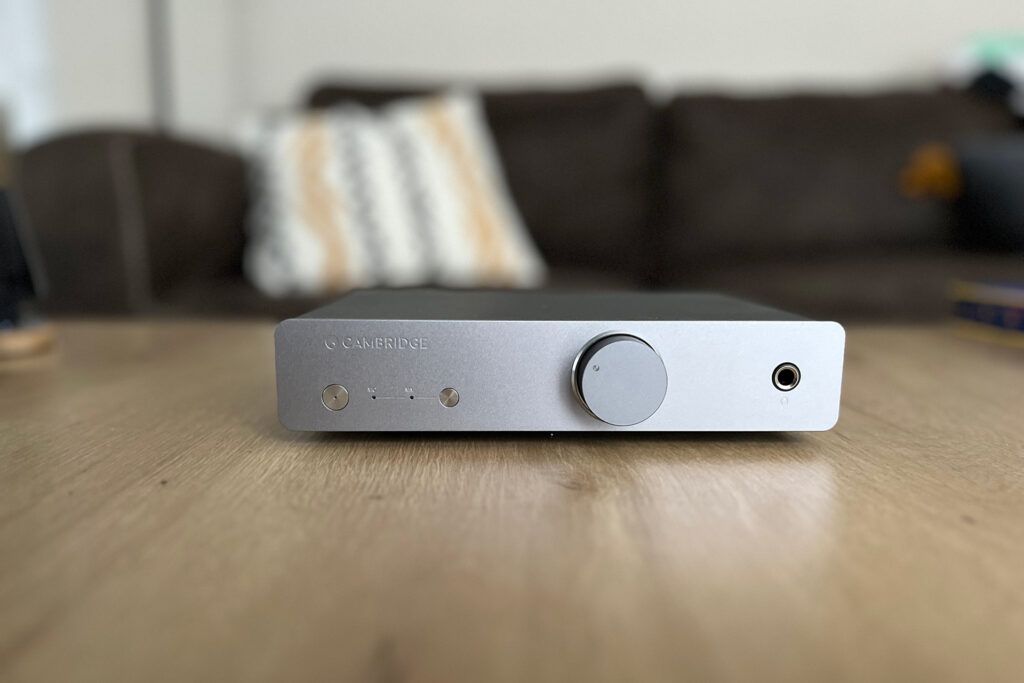
Some Things You Might Not Like About the Cambridge Audio Alva Duo Phono Preamplifier
- You do not get color/finish options. If you want to match your gear to different colors, you’re out of luck, here unless Cambridge Audio’s slate gray is what you were looking for.
- The Cambridge Audio Alva Duo doesn’t have a remote control. While it is great that the volume dial allows you to plug the Cambridge Audio Alva Duo directly into your amplifier, it would have also been great to have had a remote control to adjust the volume from the couch.
- You cannot alter or customize the sound of the Cambridge Audio Alva Duo. Many phono preamplifiers will allow you to match the phono preamplifier settings of the cartridge on your turntable. However, Cambridge Audio chose to not include those options on this phono preamplifier. I like the purist approach, as there are other, more important pieces that allow you to do EQ and/or room correction, such as my Anthem STR stereo preamp (read my review) or, more recently, the BlueSound Node 2024 (read Jerry’s rave review).
Listening to the Cambridge Audio Alva Duo Phono Preamplifier …
I ran this phono preamplifier with my Pro-Ject X1 B turntable (read my review), which uses a Sumiko Rainier cartridge, and I plugged it directly it directly into my Anthem MCA 225 Gen 2 amplifier (read the review) to ensure that I didn’t have anything else to alter the sound in between.
I started with a Vampire Weekend track titled “I Think Ur A Contra” from their album Contra.This 2010 track is one that comes with a lot of space around the sound from all of the instruments, and the Cambridge Audio Alva Duo was able to represent that very well sonically. Each note has room to breathe, without feeling like the track isn’t moving or sonically bogged down. I found that the Cambridge Audio Alva Duo phonostage lent a lot of beauty to this track, and I found myself approaching this particular track in ways that I simply hadn’t in the past. When you consider that this album is easily among the most played in my home, that says something.
Whenever I am reviewing something with vinyl, I love digging up Traffic’s “Light Up or Leave Me Alone” (on vinyl) from The Low Spark of High Heeled Boys album. This act doesn’t always get mentioned with the biggest names of progressive rock in the way Genesis, YES, King Crimson and some others do, but I find their brand of prog rock easy to listen to and full of audiophile gems. This track opens with Steve Winwood’s squealing guitar, before the groove of the bass and the vocals of Jim Capaldi (yes, this is one of the few Traffic tracks that feature Capaldi on lead vocals, instead of Winwood). The Cambridge Audio Alva Duo didn’t color the sound of the track in any noticeable way, which is so good for a component at this low price point. The soundstage was present, and it felt easy to place the location of the guitar, bass, keyboard and drum players, more so with the Cambridge Audio Alva Duo in the mix. As is the hallmark of a good phono preamplifier, the Alva Duo presented the music in a way that felt authentic to the recording.
The last track I used to test the Cambridge Audio Alva Duo preamplifier was “Thunder Road” from Bruce Springsteen’s 1975 classic New Jersey-tastic album Born to Run. On the whole, this album is a magnificent production, and one that holds up incredibly well 50 years after its release. From the opening, the piano sounds realistic, as if Springsteen was there in your living room playing in front of you. As the track starts to pick up steam, it is easy to separate the varying sounds coming from Springsteen and the E Street Band and easily place them across the band. Again, this is no small feat, as the track features the vocals, guitar, harmonica, Bass, saxophone, and the drums. This is another track that I have heard countless times on vinyl, and with the Cambridge Audio Alva in the signal chain, the positive difference in quality was noticeable.
Will the Cambridge Audio Alva Duo Phono Preamplifier Hold Its Value?
I never much believed in concerning myself with the resale value of a component that is $350. If you use this for a few years, and you decide that you want to upgrade or that you don’t want to have a separate component anymore, give the Cambridge Audio Alva Duo to someone you know who enjoys vinyl, but maybe hasn’t had the chance to use a separate component. Can you get some money for the Cambridge Audio Alva Duo a few years from now? Sure you can, but realistically, the component won’t owe you a penny by the time you look to upgrade again.
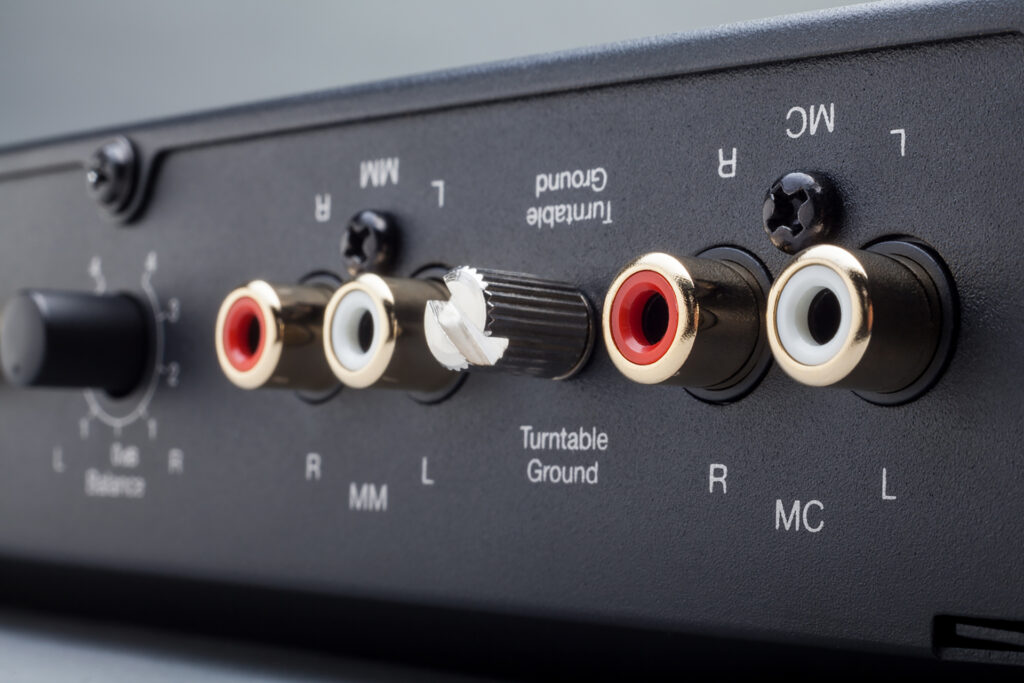
What is the Competition for the Cambridge Audio Alva Duo Phono Preamplifier?
The Pro-Ject Phono Box S3 B ($499 – buy at Crutchfield) is a little more money than the Cambridge phono preamplifier, but Pro-Ject gives you some goodies for that extra money in balanced input and output to the phono preamplifier. You can match the loading ohms, loading pF to your cartridge, as well as having four adjustable gain settings. The Phono Box S3 B also handles both moving coil and moving magnet cartridges.
When you’re looking at this price range, you should always be looking at Schiit. The Schiit Skoll($399 – buy at Amazon) can likewise handle moving coil and moving magnets like the Alva Duo, but it also has filters you can use, and you can match the gain, load and capacitive inputs coming from your cartridge, and … you can make those adjustments from the listening position. Add to that, this product is built in the United States, so there shouldn’t be any concerns about the price changing due to threatened tariffs . For many of us here in Canada, this is a big concern.
Maybe you demoed the Alva Duo and like it but don’t have the extra cash, or you feel like moving magnet cartridges are enough for you. In that case, you can look at the Cambridge Audio Alva Solo ($229 – buy at Crutchfield). It’s $100 less than the Duo and features likely the same internal hardware.
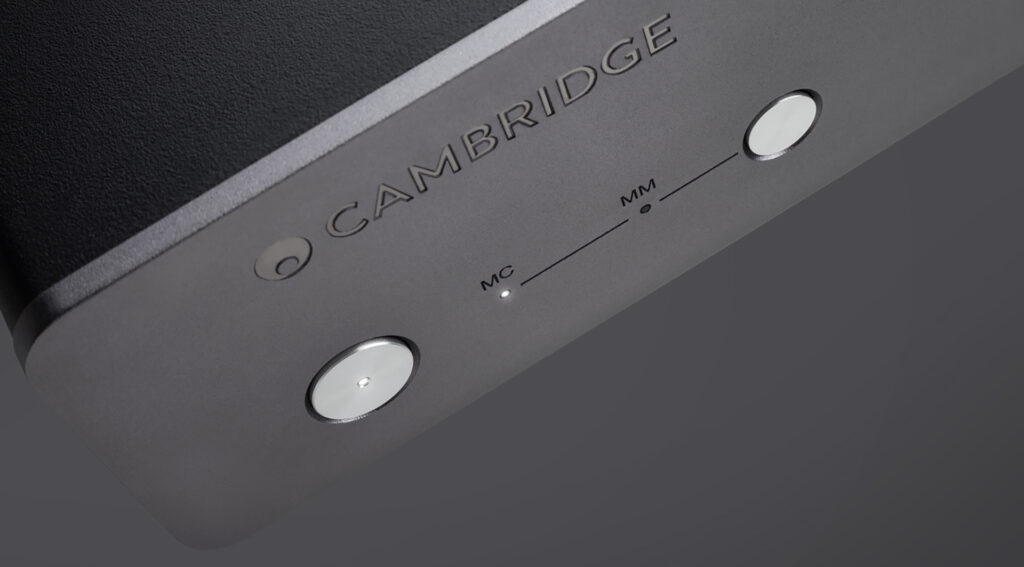
Final Thoughts on the Cambridge Audio Alva Duo Phono Preamplifier …
When I think back on my time with the Cambridge Audio Alva Duo phono preamplifier, I find myself thinking of it like opening a portal to a whole new musical world. This product checks so many boxes for audiophiles, especially those who are realistically going to be shopping in the $350 price range.
By choosing not to include the loading impedance (ohms), capacitors, and gain, it makes the product significantly more accessible, as the owner doesn’t need to figure out which cartridge they are using and then scour the Internet looking for the matching information that goes with it. By also choosing to include moving coil cartridges, it also opens up a space for the listener to try that type of cartridge, which could also send the user on a different audiophile journey. There will certainly be more than a few audiophiles who will say that, because of the lack of configuration options, this isn’t a true piece of audiophile gear. I think for the more seasoned vinyl listener, that complaint has some merit, but when you want to grow a community, few things are as important as being accessible and, at the end of the day, Cambridge Audio knocks that ball out of the park.
I enjoyed my time with the Cambridge Audio Alva Duo; it without any doubt enhanced my vinyl experience, and it is a piece that I would recommend to anyone who has just gotten into vinyl, or to add to the list of things to buy for someone who is considering getting into the vinyl part of the audiophile world. This is a very smart place for an audiophile who is just getting into the hobby to invest some of his or her money, as you get a big return sonically on a small investment. That’s what we are all about here at FutureAudiophile.com.



